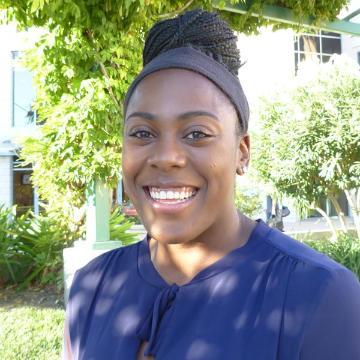
In a world where everyone is trying to say one thing, or simply get a message to a certain group of people, it’s common for there to be a miscommunication amongst these trying to connect with their audience. Although there might have been some good intentions for these actions, there have been various occasions where it was evident that this civil approach wasn’t as effective as hoped for. A great example was seen here on campus, when there was a bulletin board within a dorm hall that attempted to address “whiteness”. Yet, there wasn't much discussion on around campus. Rather, it was just another thing, swept under the rug and the bulletin was replaced swiftly. But, let’s have an honest discussion about it. We’ve all been a situation where what we were attempting to say gets misconstrued and may not have the wanted effect. It is obvious that the person wanted to create a civil conversation about white privilege but although this was one way to shed light on the issue on our SCU campus, this just mirrors what is seen today in society: What’s the best way to address audiences without giving off this idea that they are being attacked? As we all know, it can be a lot harder to have a discussion when one or both individuals feel that they are being attacked. Is it possible to have a conversation on an issue like white privilege without people feeling personally attacked? Now white privilege, whether we acknowledge it or not, is present. However, being able to be open to a dialogue on this topic can make people hesitant about participating in a conversation. Yet, these conversations are crucial if there is going to be any middle ground achieved between those who feel threatened or those who consciously or unconsciously benefit from this issue.
I argue that instead of simply taking the bulletin down. SCU could have addressed this issue with a dialogue. I know we have an image of Claradise we all strive to mimic, but if we’re really trying to create an inclusive environment that challenges people to address issues that occur outside of our little bubble...it would have been great to see if there could have been an opportunity for the RA to explain why he/she thought it was necessary because there is some value that shouldn’t go unnoticed. Coupled with those who may agree, disagree, or be indifferent about this issue. So, back to the question about how to have a discussion about issues without people feeling attacked. Can you address white privilege without attacking the conservative ideology that typically is critical of this concept? Or better yet, is it possible to have a conversation about white privilege without people’s ideologies or identities influencing the climate?
See, this blog post is centered around the bulletin board seen a few weeks ago. This question is applicable to other issues that concern our nation and world. Ideas about politics, gender, race, and so on. At the end of the day, how do people tailor their messages to desired audiences?
